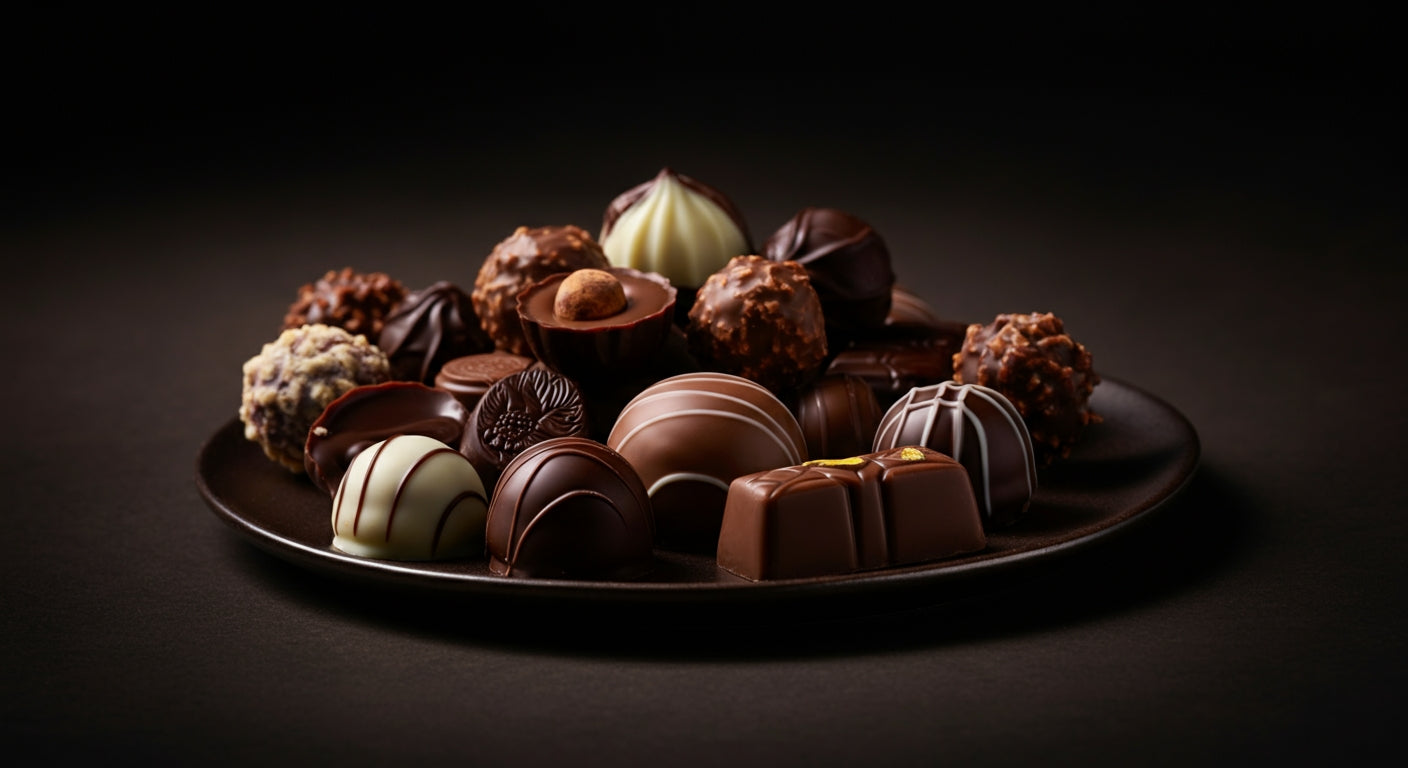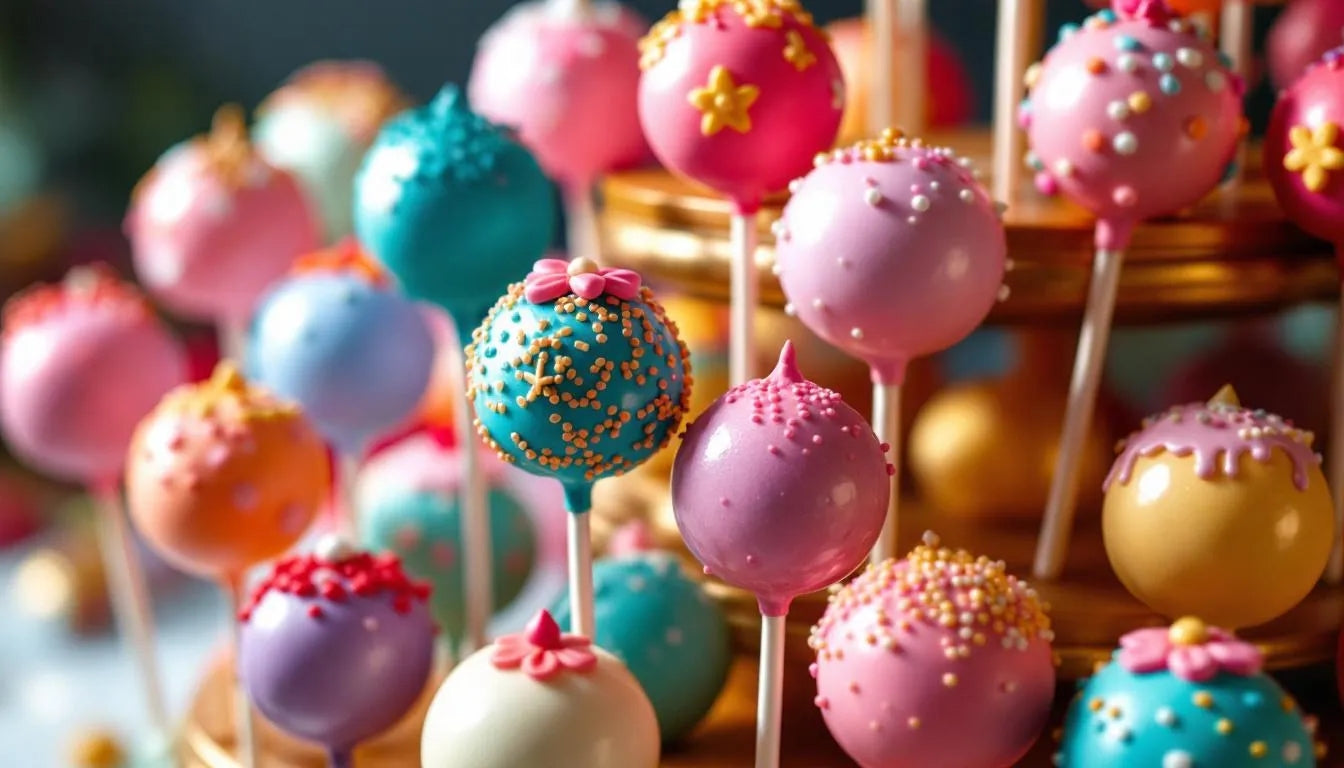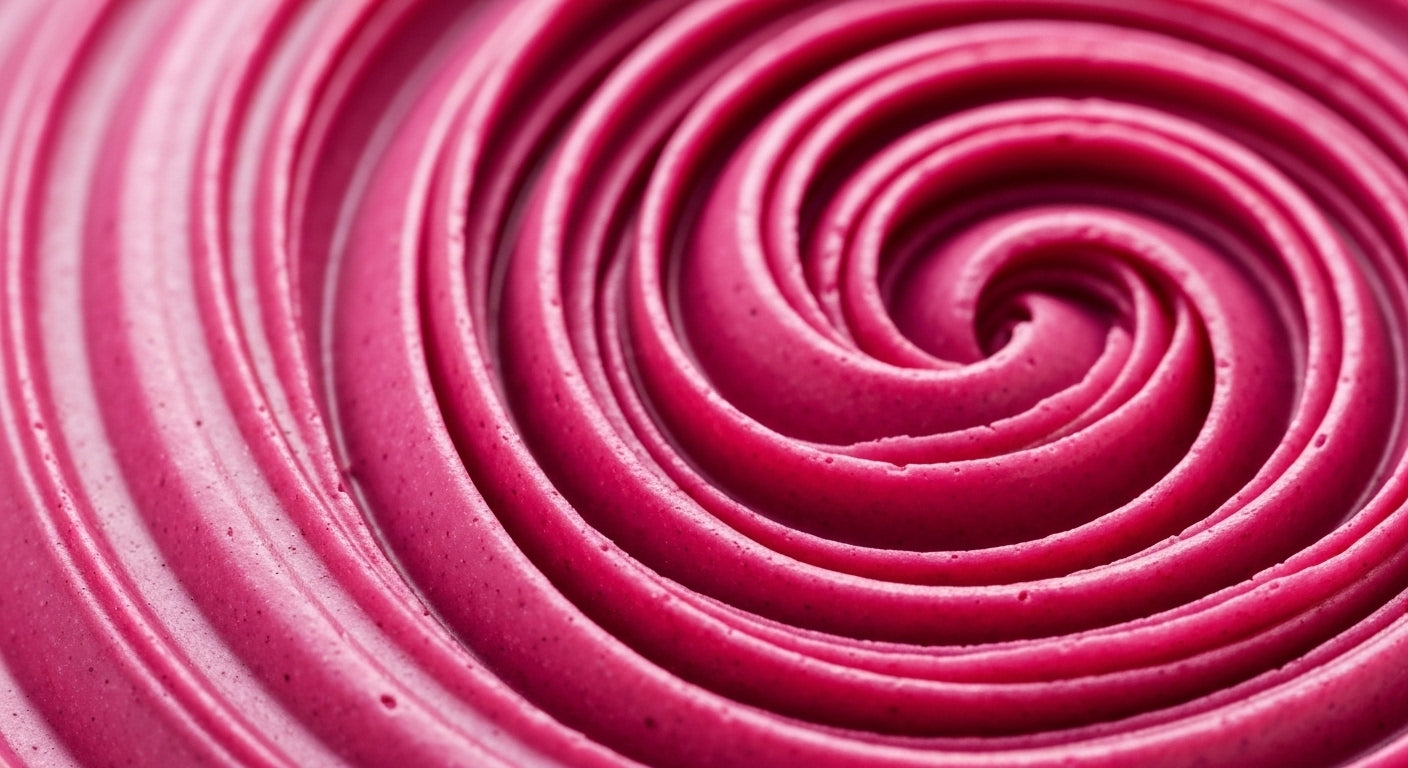
Belgian Chocolate: Understanding the World's Most Renowned Chocolate Tradition
When chocolate lovers think of luxury confections, Belgian chocolate often tops the list. But what exactly makes Belgian chocolate so special? Is it the ingredients, the techniques, the tradition, or something else entirely? Whether you're a chocolate connoisseur seeking to understand why Belgian chocolate commands premium prices or simply curious about this legendary confection, this comprehensive guide will explore everything you need to know about Belgian chocolate—from its rich history to modern artisan interpretations.
Understanding what sets Belgian chocolate apart can help you appreciate quality chocolate craftsmanship and make more informed choices when selecting premium chocolates for yourself or as gifts.
Quick Answer for Voice Search: Belgian chocolate is renowned for its high cocoa butter content, smooth texture, premium ingredients, and traditional production methods. Belgian pralines—chocolate shells filled with ganache, cream, or nuts—are Belgium's signature contribution to chocolate-making, distinguished by handcrafted quality and innovative flavors that set global standards for artisan chocolate.
The History and Heritage of Belgian Chocolate
Ancient Beginnings to European Excellence
While chocolate originated in ancient Mesoamerica thousands of years ago, Belgium's chocolate story begins much later. When Spanish conquistadors brought cocoa beans to Europe in the 16th century, chocolate initially spread through Spain and France before making its way to the Low Countries.
Belgium's chocolate legacy truly began in the 17th century when Brussels was under Spanish rule and chocolate houses started appearing in major cities. However, it wasn't until the 19th century—during the Industrial Revolution—that Belgium emerged as a global chocolate powerhouse.
The Birth of Belgian Chocolate Innovation
Several key innovations established Belgium's chocolate reputation:
1857: Jean Neuhaus, a Swiss immigrant, opened a pharmaceutical confectionery shop in Brussels' Galeries Royales Saint-Hubert. This marked the beginning of one of Belgium's most famous chocolate dynasties.
1912: Jean Neuhaus II invented the "praline"—a chocolate shell filled with flavored cream, ganache, or nuts. This revolutionized chocolate-making and became Belgium's signature contribution to the confectionery world. The praline elevated chocolate from simple bars to sophisticated confections with endless flavor possibilities.
1915: Louise Agostini, Jean Neuhaus II's wife, invented the "ballotin"—the elegant wrapped box specifically designed to present pralines beautifully. This innovation transformed chocolate into the perfect gift.
Early 1900s: Belgian chocolate makers pioneered new tempering and molding techniques that created smoother, more lustrous chocolate with superior snap and melt-in-your-mouth texture.
These innovations, combined with Belgium's strategic location as a European trade hub and access to high-quality cocoa from Belgian colonial territories in Africa, positioned Belgium as a chocolate authority that would influence global standards for generations.

What Defines Authentic Belgian Chocolate?
Official Standards and Regulations
Belgium takes its chocolate seriously—so seriously that the country has established strict legal definitions for what can be called "Belgian chocolate." According to Belgian law, chocolate must meet specific criteria:
Cocoa Butter Requirements: Belgian chocolate must contain 100% pure cocoa butter with absolutely no vegetable fats or cocoa butter substitutes. This requirement ensures the smooth, creamy texture and authentic chocolate flavor that Belgian chocolate is famous for.
Minimum Cocoa Content:
- Dark chocolate: Minimum 35% cocoa solids
- Milk chocolate: Minimum 25% cocoa solids
- White chocolate: Minimum 20% cocoa butter
Production Location: To be labeled "Belgian chocolate," the entire manufacturing process—from grinding the cocoa beans to final molding—must occur in Belgium.
These regulations ensure consistency and quality, protecting both consumers and Belgium's chocolate reputation.
The Belgian Chocolate-Making Philosophy
Beyond legal requirements, Belgian chocolate embodies specific philosophical approaches to chocolate-making:
Quality Over Quantity: Belgian chocolatiers prioritize artisan craftsmanship over mass production. Small-batch methods allow for careful attention to detail at every stage.
Premium Ingredients: Only the finest cocoa beans, fresh dairy (in non-vegan versions), pure cocoa butter, and natural flavorings make the cut. Belgian chocolate makers traditionally source beans from specific regions known for superior quality.
Traditional Techniques: While technology aids efficiency, traditional methods like hand-tempering, manual enrobing, and artisan molding remain central to Belgian chocolate production.
Innovation Within Tradition: Belgian chocolatiers balance respect for classic techniques with creative innovation in flavors and presentations, constantly pushing boundaries while honoring heritage.
Belgian Pralines: The Crown Jewel of Belgian Chocolate
Understanding True Belgian Pralines
When most people think of Belgian chocolate, they think of pralines—though many don't fully understand what makes these confections unique. Belgian pralines differ significantly from American pralines (which are typically nuts covered in caramel) or French pralines (which are caramelized almonds).
Belgian pralines are hollow chocolate shells filled with various ganaches, creams, flavored pastes, or nuts. The shell itself is made from tempered chocolate that provides structure and snap, while the filling delivers flavor complexity. This architecture creates a textural contrast that's central to the Belgian praline experience.
Classic Belgian Praline Varieties
Traditional Belgian praline flavors include:
Coffee Ganache: Rich espresso-infused cream filling in dark chocolate shells, similar to our Espresso Truffles which combine coffee and chocolate perfectly.
Gianduja: Smooth hazelnut-chocolate paste that inspired countless variations, comparable to Hazelnut Chocolate Bars that celebrate this classic pairing.
Raspberry Cream: Fruit-forward filling balanced with dark chocolate, reminiscent of our Raspberry Chocolate Truffles.
Salted Caramel: Buttery caramel enhanced with sea salt, a flavor profile showcased in Salted Caramel Chocolate Bars.
Alcohol-Infused: Liqueur-based fillings like Grand Marnier, whisky, or champagne ganache for sophisticated palates.
Nut Butter: Almond, hazelnut, or mixed nut paste centers that provide richness and texture.
The Art of Praline Making
Creating exceptional pralines requires mastery of several techniques:
- Shell Formation: Tempering chocolate to the precise temperature (88-90°F for dark chocolate) creates shells with proper crystalline structure for glossy appearance and satisfying snap.
- Filling Creation: Ganache must achieve perfect consistency—not too liquid to leak, not too firm to provide contrast with the shell.
- Assembly: Filling the shells requires precision to avoid air pockets while not overfilling.
- Sealing: The final chocolate layer must bond seamlessly with the shell edge.
- Decoration: Hand-piped chocolate designs or garnishes distinguish premium pralines and indicate flavors.
This labor-intensive process explains why authentic artisan pralines command higher prices than mass-produced alternatives.

Belgian Chocolate vs. Other Chocolate Traditions
How Belgian Chocolate Compares
Understanding Belgian chocolate requires comparing it to other renowned chocolate-making traditions:
Swiss Chocolate: Known for its milk chocolate and conching process (extended mixing that creates ultra-smooth texture), Swiss chocolate tends to be sweeter and creamier than Belgian chocolate. Swiss chocolatiers pioneered milk chocolate and excel at creating melt-in-your-mouth bars.
French Chocolate: Emphasizes single-origin beans, higher cocoa percentages, and darker, more intense flavors. French chocolate tends toward sophistication and terroir expression, similar to wine-making philosophy.
American Craft Chocolate: The bean-to-bar movement focuses on transparency, direct trade relationships, and showcasing unique bean characteristics. American craft chocolatiers often experiment boldly with unconventional flavor pairings.
Belgian Chocolate: Sits in the middle ground—balancing smoothness with flavor intensity, tradition with innovation, and accessibility with luxury. Belgian chocolate excels at textural refinement and the praline format that showcases both chocolate and fillings.
What Sets Belgian Chocolate Apart
Several characteristics distinguish Belgian chocolate:
Higher Cocoa Butter Content: Belgian chocolate typically contains more cocoa butter than minimum requirements, creating that characteristic smooth mouthfeel and quick melting point.
Finer Grinding: Belgian chocolatiers grind cocoa particles to extremely fine sizes (often under 20 microns), eliminating any grittiness for silk-smooth texture.
Balanced Sweetness: Unlike some chocolate traditions that lean heavily sweet or intensely bitter, Belgian chocolate aims for balance that appeals to wide audiences.
Shell-and-Fill Architecture: The praline format—perfected in Belgium—creates unique textural and flavor experiences impossible with solid chocolate bars.
Modern Belgian Chocolate and Artisan Alternatives
The Belgian Chocolate Industry Today
Belgium continues to produce approximately 220,000 tons of chocolate annually, with over 2,000 chocolate shops throughout the country. Major Belgian brands like Neuhaus, Godiva, Leonidas, and Guylian have become household names globally.
However, the Belgian chocolate industry faces modern challenges:
Sustainability Concerns: Traditional Belgian chocolate's reliance on dairy products raises environmental questions as consumers become more eco-conscious.
Ethical Sourcing: Increasing awareness of cocoa farming conditions has pushed Belgian chocolatiers toward fair trade and direct trade relationships.
Dietary Restrictions: Growing demand for vegan, gluten-free, and allergen-free options challenges traditional recipes based on dairy and other animal products.
Competition: Craft chocolate makers worldwide now produce exceptional chocolate, reducing Belgium's monopoly on premium chocolate.
The Rise of Ethical Artisan Chocolate
Modern chocolate lovers increasingly seek alternatives that match Belgian quality standards while addressing contemporary concerns. This shift has given rise to innovative chocolatiers who create exceptional products using:
Plant-Based Ingredients: Achieving creamy texture without dairy through alternatives like coconut, cashew, and almond bases.
Ethical Sourcing: Direct relationships with cacao farmers ensuring fair compensation and sustainable practices.
Organic Certification: Prioritizing organic farming methods that protect both farmers and ecosystems.
Transparent Supply Chains: Knowing exactly where chocolate comes from and how it's produced.
Our organic vegan chocolate embodies these values while maintaining the quality standards that made Belgian chocolate legendary. Using techniques refined over centuries, modern artisan chocolatiers prove that ethical, plant-based chocolate can rival traditional European excellence.
Understanding Chocolate Quality: What to Look For
Reading Chocolate Labels
Whether you're buying Belgian chocolate or artisan alternatives, understanding labels helps you identify quality:
Cocoa Percentage: Higher percentages indicate more chocolate flavor and less sugar. Look for 70-85% for intense dark chocolate or 35-50% for balanced milk chocolate alternatives.
Ingredient List: Shorter is better. Quality chocolate needs only cocoa (or cacao), cocoa butter, sweetener, and perhaps vanilla. Avoid products listing vegetable oils, artificial flavors, or numerous stabilizers.
Origin Information: Single-origin chocolate or chocolate specifying bean sources suggests higher quality and transparency. Learn more about different types of chocolate and their characteristics.
Certifications: Look for organic, fair trade, or climate-neutral certifications that indicate ethical production.
Evaluating Chocolate Quality
Professional chocolatiers and sommeliers evaluate chocolate using specific criteria:
Appearance: Quality chocolate should have a glossy, uniform surface without streaks, spots, or bloom (white film indicating improper tempering or storage).
Snap: When broken, good chocolate produces a clean, sharp snap—indicating proper tempering and cocoa butter crystallization.
Aroma: Before tasting, smell the chocolate. Quality chocolate releases complex aromas—fruity, nutty, floral, or earthy notes depending on bean origin and processing.
Melt: Place chocolate on your tongue without chewing. Quality chocolate melts smoothly at body temperature without waxy or grainy sensation.
Flavor: Note the flavor evolution—initial taste, middle notes, and finish. Quality chocolate reveals multiple flavor layers rather than one-dimensional sweetness.
Mouthfeel: Texture should be smooth and creamy, coating the palate without stickiness or grittiness.
Using these evaluation criteria, you can assess any chocolate—whether Belgian, Swiss, American craft, or artisan vegan chocolate—objectively.

How to Enjoy and Store Premium Chocolate
Proper Chocolate Storage
Even the finest chocolate deteriorates when stored improperly. Follow these guidelines to maintain quality:
Temperature: Store chocolate at 65-70°F (18-21°C) in a consistent environment. Avoid temperature fluctuations that cause bloom.
Humidity: Keep humidity below 50% to prevent sugar bloom and moisture absorption.
Light Protection: Store in opaque containers away from direct sunlight, which degrades flavor compounds.
Odor Protection: Chocolate absorbs surrounding odors easily. Store away from strong-smelling foods in airtight containers.
Timeframe: While properly stored dark chocolate lasts 18-24 months, enjoy it within 6-12 months for peak flavor. Learn more about how long chocolate lasts under various conditions.
For longer-term storage, you can freeze chocolate using proper techniques that preserve quality.
Chocolate Tasting Tips
To fully appreciate premium chocolate:
- Temperature: Remove chocolate from storage 30 minutes before tasting so it reaches room temperature, releasing full aromatic compounds.
- Palate Preparation: Cleanse your palate with water or neutral crackers between different chocolates.
- Visual Examination: Observe color, gloss, and uniformity before tasting.
- Aroma Assessment: Break chocolate to release aromatics, then smell deeply before tasting.
- Mindful Tasting: Place chocolate on your tongue and let it melt slowly, noting flavor evolution from initial taste through finish.
- Pairing Considerations: Chocolate pairs beautifully with coffee, wine, cheese, fruits, and nuts. Experiment to find complementary combinations.
Making Belgian-Style Chocolate at Home
Essential Equipment
While professional chocolatiers use specialized equipment, home cooks can create Belgian-style treats with basic tools:
- Digital thermometer: Essential for proper tempering
- Double boiler or microwave: For gentle chocolate melting (read how to melt chocolate in the microwave)
- Silicone molds: For shaping pralines and truffles
- Piping bags: For filling and decorating
- Marble slab (optional): Traditional tempering surface
Basic Belgian-Style Truffle Recipe
Create your own artisan chocolate truffles at home:
Ingredients:
- 8 oz high-quality dark chocolate (70-81%), finely chopped
- 1/2 cup full-fat coconut milk or plant-based cream
- 2 tbsp coconut sugar (optional, for sweetness)
- 1 tsp vanilla extract
- Cocoa powder, cacao nibs, or melted chocolate for coating
Instructions:
- Heat coconut milk until just simmering, then remove from heat.
- Pour hot coconut milk over chopped chocolate, let sit 2 minutes.
- Stir gently until smooth ganache forms. Add vanilla.
- Refrigerate ganache 2-3 hours until firm enough to scoop.
- Using a small scoop, portion ganache and roll into balls.
- Roll in cocoa powder, or dip in tempered chocolate for professional finish.
- Store in airtight container in refrigerator up to 2 weeks.
For variations, add espresso powder, fruit purees, or nut butters to the ganache. Discover more inspiration in our vegan fudge recipe guide.
Tempering Chocolate at Home
Tempering chocolate creates the glossy appearance and satisfying snap characteristic of professional chocolates:
- Melt: Heat 2/3 of your chocolate to 115-120°F (46-49°C).
- Cool: Add remaining 1/3 chocolate (seed method) and stir until temperature drops to 80-82°F (27-28°C).
- Reheat: Gently warm to working temperature: 88-90°F (31-32°C) for dark chocolate, 86-88°F (30-31°C) for milk or white chocolate.
- Test: Dip a knife in chocolate and observe. Properly tempered chocolate sets within 5 minutes with glossy finish.
- Maintain: Keep chocolate at working temperature while molding or coating.
Frequently Asked Questions About Belgian Chocolate
What is the difference between Belgian chocolate and regular chocolate?
Belgian chocolate differs from regular chocolate primarily in its higher cocoa butter content, finer grinding process, and stricter production standards. Belgian law requires 100% pure cocoa butter with no vegetable fat substitutes, while many commercial chocolates use cheaper oils. Belgian chocolate also undergoes finer particle grinding (often below 20 microns) creating smoother texture, and the cocoa butter percentage typically exceeds minimum requirements for enhanced creaminess. The traditional Belgian praline format—shells filled with ganache—represents innovation that sets Belgian chocolate apart. However, many modern artisan chocolatiers worldwide now match or exceed Belgian quality standards using similar techniques.
Is Belgian chocolate really made in Belgium?
Authentic Belgian chocolate must be entirely produced in Belgium according to Belgian law. However, many brands marketed as "Belgian chocolate" are actually made elsewhere using "Belgian-style" methods. Major brands like Godiva (now owned by Turkish company Yıldız Holding) have moved some production facilities outside Belgium. When purchasing "Belgian chocolate," check labels carefully—look for "Made in Belgium" rather than just "Belgian-style" or brand names that sound Belgian. Some premium chocolatiers outside Belgium create exceptional chocolate using Belgian techniques, offering quality comparable to authentic Belgian chocolate while providing benefits like organic certification, ethical sourcing, and plant-based ingredients.
Why is Belgian chocolate so expensive?
Belgian chocolate commands premium prices for several reasons: high-quality ingredients like pure cocoa butter cost significantly more than substitute fats; artisan production methods involving hand-crafting pralines and careful tempering require skilled labor and time; premium cocoa bean sourcing from specific origins increases costs; Belgium's reputation allows premium pricing similar to French wine or Swiss watches; and import costs, tariffs, and international shipping add expenses for non-European buyers. However, price doesn't always equal quality—some expensive Belgian chocolate reflects brand prestige rather than superior ingredients. Conversely, some craft chocolatiers offer exceptional quality at competitive prices by eliminating middlemen through direct-to-consumer sales.
Can you find Belgian-quality chocolate that's vegan?
Yes! Modern chocolate-making techniques can achieve Belgian-quality standards using plant-based ingredients. The key characteristics of Belgian chocolate—smooth texture, high cocoa butter content, refined mouthfeel, and complex flavors—don't inherently require animal products. Plant-based alternatives like coconut milk, cashew cream, and almond butter can create equally creamy textures when combined with proper technique. Our dark chocolate truffles and vegan chocolate bars demonstrate that plant-based chocolate can match traditional quality while offering benefits like lower environmental impact, allergen-friendliness, and ethical sourcing. The key is choosing chocolatiers who prioritize quality ingredients and traditional techniques regardless of whether they use animal products.
How should I select quality chocolate pralines or truffles?
When selecting premium chocolate pralines or truffles, look for several quality indicators: short ingredient lists featuring cocoa or cacao, cocoa butter, natural sweeteners, and real flavorings without artificial additives; glossy, uniform appearance without streaks or white bloom; firm structure that doesn't feel soft or sticky; transparent sourcing information about cocoa origin and production methods; appropriate pricing (genuine artisan chocolate rarely costs less than $2-3 per piece); and fresh production dates, as filled chocolates have shorter shelf lives than solid bars. Smell is also important—quality chocolate releases pleasant cocoa aromas without chemical or stale odors. Consider trying custom truffle boxes that let you sample various flavors to discover your preferences.
Featured Snippet Summary
What makes Belgian chocolate special? Belgian chocolate is distinguished by 100% pure cocoa butter content, fine particle grinding for ultra-smooth texture, traditional praline craftsmanship with shell-and-fill architecture, balanced flavor profiles, and strict production standards. Belgium pioneered the praline—filled chocolate shells—in 1912, establishing techniques that influence global chocolate-making today.
Experience World-Class Artisan Chocolate Today
Understanding Belgian chocolate's legendary status helps chocolate lovers appreciate the craftsmanship, techniques, and standards that define premium chocolate worldwide. While Belgium established many chocolate traditions that endure today, the modern chocolate landscape offers exciting alternatives that honor these traditions while addressing contemporary values.
Today's conscious consumers need not choose between quality and ethics. Premium artisan chocolate makers now create exceptional confections that rival Belgian standards while offering organic certification, plant-based ingredients, transparent sourcing, and climate-neutral production—proving that the future of chocolate can be both luxurious and sustainable.
Ready to experience chocolate that combines time-honored craftsmanship with modern values? Explore our collection of organic vegan chocolate featuring artisan truffles with creamy ganache centers and premium dark chocolate bars crafted from fair-trade, organic cacao. Each product embodies the quality standards that made Belgian chocolate famous—smooth texture, balanced flavors, and meticulous attention to detail—while supporting regenerative farming, ethical labor practices, and environmental sustainability.
From our signature Berkeley Bar featuring nougat, caramel, and almonds in 81% dark chocolate, to our Rose Truffle infusing ganache with aromatic Bulgarian rose oil, every bite tells a story of conscious indulgence.
Discover why thousands of chocolate lovers choose Coracao Confections for celebrations, gifts, and personal indulgence. Shop our complete collection today and taste the difference that organic ingredients, ethical sourcing, and artisan craftsmanship make. Because exceptional chocolate shouldn't compromise your values—it should enhance them.

Claire Bennett
I'm Claire, a chocolate lover and artisan based in a small town where I run a tiny home kitchen dedicated to exploring everything chocolate. From single-origin dark bars to creamy ganache and handmade truffles, I find joy in working with all types of chocolate. I believe chocolate has a story, and I love bringing that story to life through humble, heartfelt creations.



Leave a comment
This site is protected by hCaptcha and the hCaptcha Privacy Policy and Terms of Service apply.